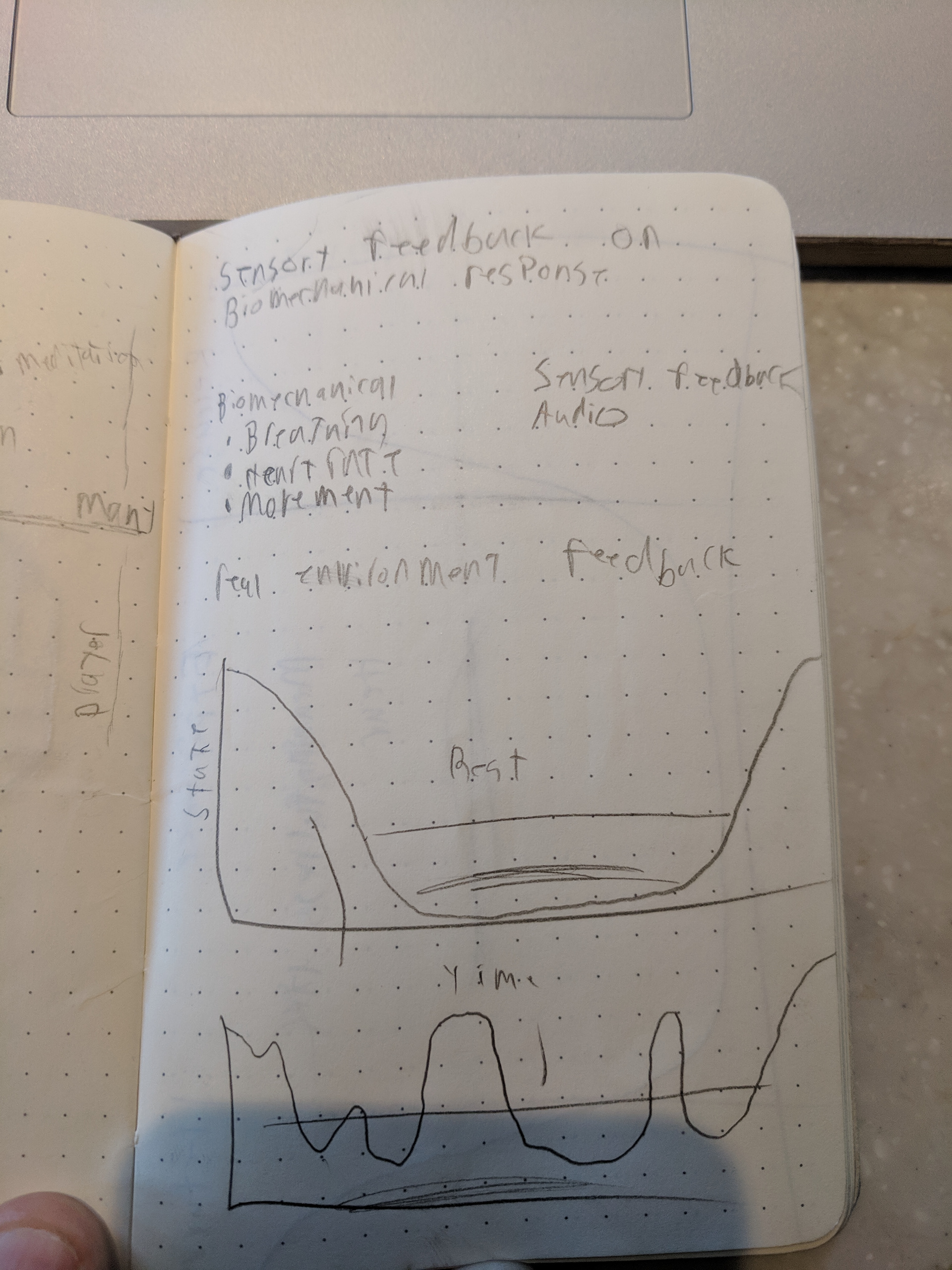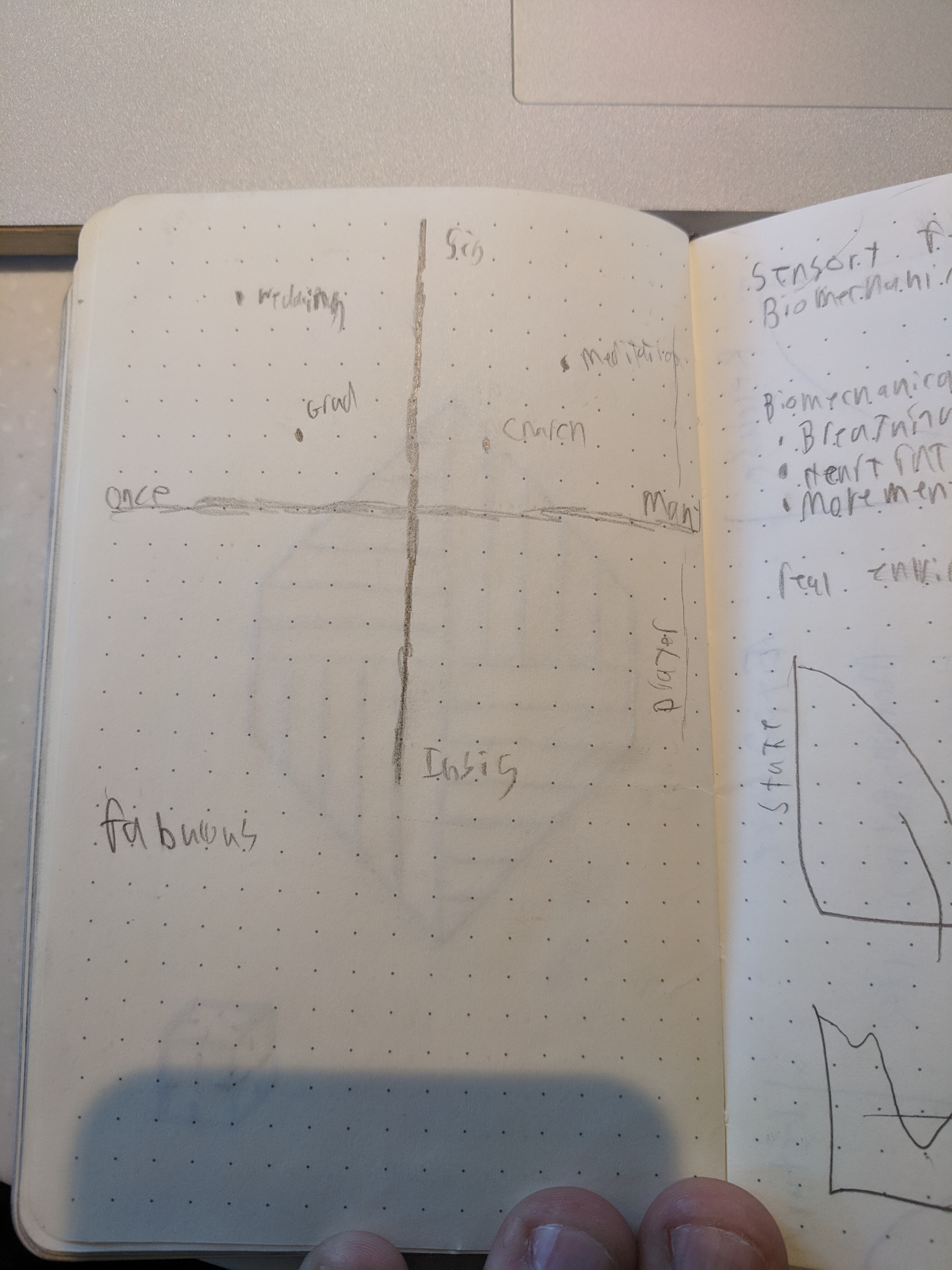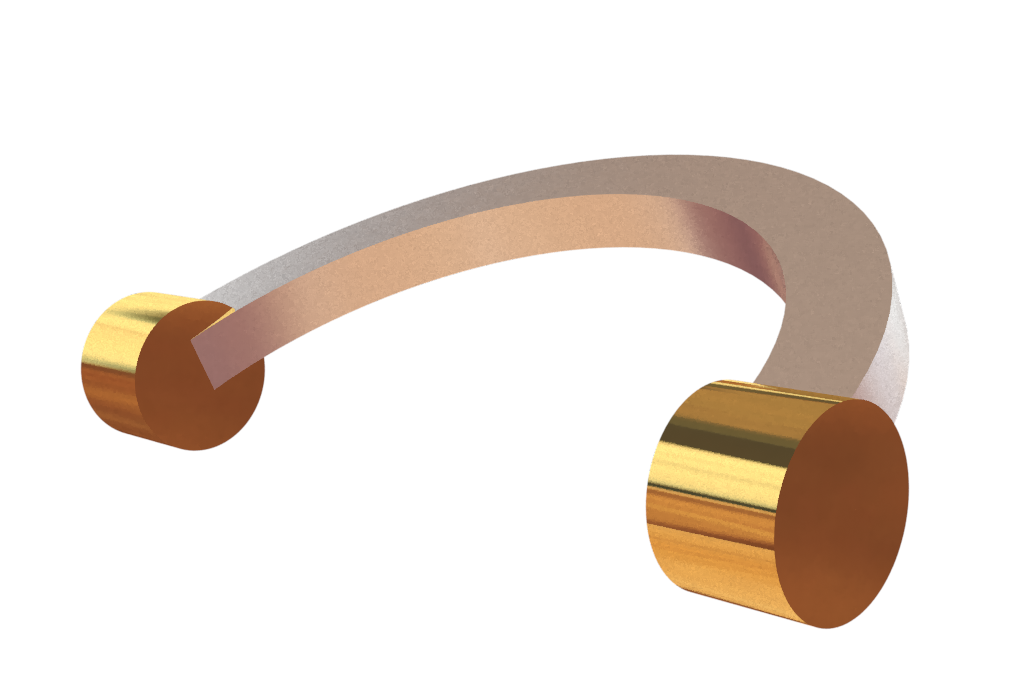The artifact comes in two independent parts: the digital and physical. The XD mock-up below is a prototype of the visual design of the digital component. A render of a physical mock-up is also included.
My process began with identifying what part of the ritual creates value and what form this value takes. I began by placing the ritual on a matrix of value and frequency in relation to other rituals present in my life.
I then Identified the steps of the ritual, including closed and open portions, to evaluate the creation of meaning at a more detailed level. I chose to identify the environmental focused portions of the ritual as open components and the inner thoughts focus sections as closed portions of the ritual.
From here I decided to evaluate the challenges and obstacles that could hinder someone from frequently engaging with the ritual or that reduced the value gained. I identified the challenges I faced as well as researched what difficulties others faced through personal conversation and crawling of internet meditation guides and forums.
At this point I felt that I had a strong enough understanding of the value, process, and challenges inherent in meditation to develop an artifact to enhance the ritual. I set forth a series of goals that the artifact should achieve:
Non intrusive, presence should almost not be felt
Efficient, minimize distractions to enhance the experience
Promote mindfulness of environment as well as self
Should feel fun and engaging
Accessible, non-technical, “plug and play”
Guiding through gentle “push pull” feedback
After Identifying the primary environmental factor that impacted the value of the ritual for me, sound, I decided on a simple app that could use existing hardware to provide guiding feedback throughout the process as well as minimize distractions. The easily accessible nature of such an artifact should encourage more widespread adoption of the practice.
After some research on the physical technology required to achieve this I decided that an optional specialized piece of hardware could serve to further enhance the experience.
After developing the prototype and renders above I reflected on the design process. I feel like many of the goals that I identified for the artifact also applied to my role as a designer in this process. Non intrusiveness was important not only in the practice of the ritual but also in the design process in order to respect the individuality in how others practice the ritual. The necessity of fun and engaging content played a more practical role in the design process where the presence of these qualities in the users interaction promoted the use of the artifact as a whole.
One of the most difficult parts of the process was identifying the areas that could be changed or modified to enhance the ritual. I started off with identifying the parts of the process that that enhanced meaning. I found it difficult to connect these with a process or object that would enhance the ritual. After I changed my focus to the environmental conditions necessary to gain meaning form the ritual I had much more success.
Below are process images of early and intermediate design phases.






